Finished product of the 3D printed cowboy hat!
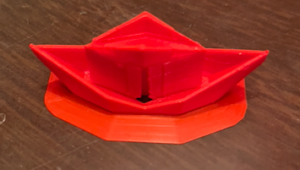
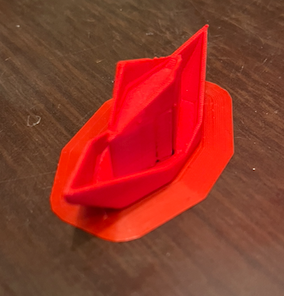


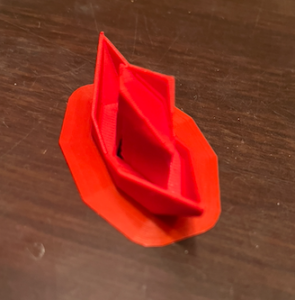
Comparison between oragami and 3D printed object.
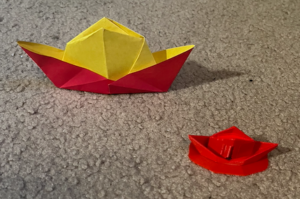

Never stop learning, because life never stops teaching
Finished product of the 3D printed cowboy hat!





Comparison between oragami and 3D printed object.


Juggling is surely difficult, but with practice comes results!
Professional juggler Jack Kalvan teaches everything you need to know about the basics of juggling in his youtube video.
Went to tiktok for this blog post video!
Starting to incorporate juggling into my routine before hockey practice as a way to warm my hands and eyes up
Main ideas
Also found an upgrade in objects to juggle, these sand filled balls were lying around the house and are meant for juggling, there are super cheap if interested.
Integrating digital literacy into high school physical education (PE) and health classes that I will be teaching can provide students with essential skills to navigate the digital world while promoting well-rounded health education.
Some objectives and activities I thought of that revolve around digital literacy:
Objective: Understand the impact of digital technology on physical and mental well-being.
Activities: Discuss the role of digital devices in daily life and their potential effects on health.
Explore resources on balancing screen time and maintaining a healthy relationship with technology.
Objective: Develop skills to critically assess and evaluate digital information related to health.
Activities: Teach students how to discern reliable health information from misinformation online.
Engage in discussions about the influence of social media on body image and mental health.
Objective: Develop positive digital communication skills and explore the impact on social health.
Activities: Discuss the effects of cyberbullying and strategies for promoting a positive online environment.
Role-play scenarios to practice effective and respectful digital communication.
Objective: Promote responsible online behavior and safeguard personal information.
Activities: Teach students about online privacy settings and the importance of protecting personal information.
Discuss potential risks and strategies for staying safe online.
Objective: Understand the principles of responsible digital citizenship in the context of physical activity.
Activities: Discuss the impact of social media on sportsmanship and respectful behavior in physical activities.
Explore positive examples of digital citizenship in sports and physical education.
Incorporating NCTE’s goals of literacy in a digital age into high school physical education involves recognizing the interconnected nature of literacy and embracing technology as an integral component of students’ communicative and sociocultural practices. Here’s a few goals that can be integrated:
Participate Effectively and Critically in a Networked World:
Encourage students to engage in online platforms or communities related to physical fitness and well-being. Discuss the role of online networks in promoting health and sharing fitness goals.
Explore and Engage Critically Across a Variety of Texts and Tools/Modalities:
Utilize diverse digital resources, such as online articles, videos, and interactive apps, to explore topics like nutrition, fitness routines, and mental health. Teach students to critically evaluate digital health information.
Consume, Curate, and Create Actively Across Contexts:
Have students curate and create digital content related to physical fitness, healthy living, or sports. This could include creating digital portfolios, blogs, or videos showcasing their fitness journey.
In terms of fake news, why do people fall for it?
People can now create content unburdened by the layers of editing and fact-checking that news organizations adhere to
The prevalence of fake news in the digital age poses significant challenges, impacting not only information dissemination but also the well-being of individuals. Recognizing the potential consequences, it becomes essential to align educational objectives with addressing these issues. Here’s how to connect the impact of digital technology on physical and mental well-being with the objectives and activities mentioned:
Develop skills to critically assess digital information related to health.
Activity: Explore the implications of unfiltered content creation on the spread of misinformation. Teach students to critically evaluate health-related information online.
John Spencer does a great breakdown of misinformation in his youtube video.
Explore the impact of digital technology on mental well-being.
Activity: Analyze how fake news stories appeal to emotions and discuss strategies for emotional resilience in the digital age.
Promote responsible online behavior and safeguard personal information.
Activity: Investigate the role of internet bots in the spread of misinformation. Teach strategies to identify and counteract the influence of bots.
Melissa Techman has an incredible 10 tips for teaching info literacy/evaluation/research skills in her presentation.
The autotelic activity and self determination theory are two things that really stuck out to me during the video game lecture. A couple thoughts that came to mind; why have I been playing for so long, and why do I want to improve at every game I play? I dove into the autotelic activity and realized the reward system is definitely something that motivates me. I have the personality of a perfectionist, so I will practice until I am excelling. Not just for myself, but to benefit the people I play with as well. Which is where the social aspect comes into play. I really enjoy connecting with friends online and having chemistry within different games. Furthermore, having success in video games both on my own and with friends can enable things within the body like endorphins, dopamine, serotonin, oxytocin, and adrenaline. All of these things play essential roles in regulating mood, emotions, and physiological responses in the body. The biggest thing I have realized in all of this research is the positive feelings coming from video games, the rewards I feel for having success and good times with friends has me craving more all the time.
I’m thrilled to share my journey into the world of podcasting. An experience filled with excitement, a few challenges, and lessons learnt along the way. Co-creating my first-ever podcast has been a unique experience. It all started with a discussion with my fellow group members as we had to select a topic from a list provided to us. There seemed to be a passion for the topic of artificial intelligence, and the desire to discuss how it can be used in different parts of life. Armed with a microphone on my computer, some research, and some enthusiasm, I embarked on the journey of bringing my thoughts to life.
Deciding the podcast’s theme was a crucial step. What did I want my short section to sound like? Who was my target audience? These questions fueled my content creation process. From scripting an engaging intro to planning my core content, every step was a step closer to the final product.
As a beginner, navigating the technical aspects of podcasting was a new journey all on its own. Learning how to use recording software and editing tools—I had to acquaint myself with a whole new language. It took me a few tries, but after I worked out some kinks, I knew I was going to have success.
Connecting with an audience was a thought I had during the entire process. AI is continually growing as a tool that lots of people are using and I feel that we are putting together a podcast that is insightful and unique. In my portion I wanted to state what AI is and a little history behind it, although we only have about a minute each, I thought I did a fairly nice job of getting my points across in the allocated time.

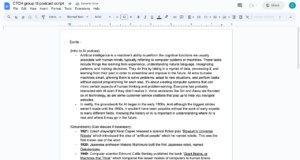

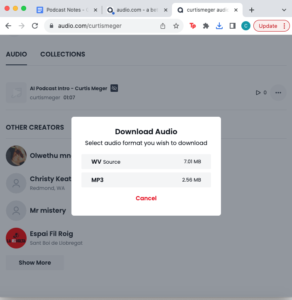
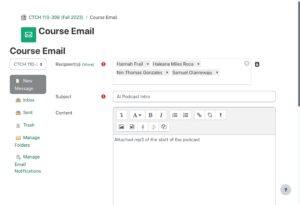
Podcast Script
Hello everyone, on today’s podcast we are going to be discussing artificial intelligence, and how it has grown to be a huge part of our daily lives.
(Intro to AI podcast)
References
McKinsey & Company. (2023, April 24). What is ai?. McKinsey & Company. https://www.mckinsey.com/featured-insights/mckinsey-explainers/what-is-ai
Rockwell, A. (2017, August 28). The history of Artificial Intelligence. Science in the News. https://sitn.hms.harvard.edu/flash/2017/history-artificial-intelligence/
Reflection
Fixing the Code
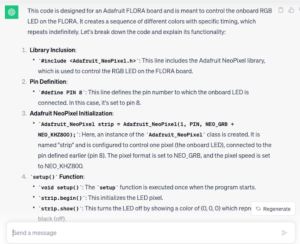


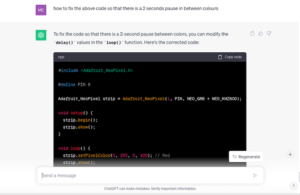

Final Code


Once I got following along with the lab I started to get rolling and this was the first image I was able to create.

From there I got into the changing of colors and adding more shapes.

Tried out a different shape and new colors.

The next task was getting a shape to move across the screen, after a few attempts we got it.

The final results of the creative coding.
When I was in my younger-middle years days, the use of the internet slowly started to pick up as I went along. I was fortunate enough to have great educators along the way who allocated lots of time to ensure we were aware of the complexities of the world wide web and the potential risks associated with it.
I attended a school that excelled in teaching students the importance of safeguarding personal information, recognizing online threats, and navigating the digital world responsibly. While the school’s approach was not based on scare tactics, it was still discussed. But the approach was rather focused on educating us about proper internet use and encouraging responsible digital citizenship. This experience provided me with the knowledge and skills needed to stay safe in the online environment while fostering an appreciation for the benefits and responsibilities that come with the digital age.
Looking back, I am super grateful to have grown up in a era where the internet was popular enough for teachers to put lots of emphasis on how to be safe while using it. It probably saved me a lot of grief because what they say is true, if you post it, it can sometimes be out there forever, whether you want it to be or not.
The Government of Canada has a great site for learning about keeping kids safer online, one that I found while doing a lesson on internet awareness and safety.
© 2025 Curtis Meger
Theme by Anders Noren — Up ↑
Recent Comments